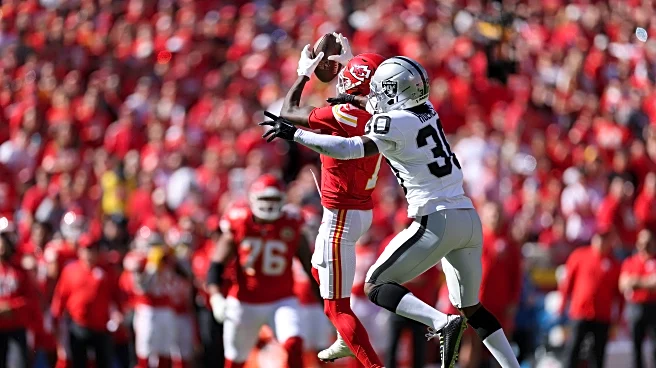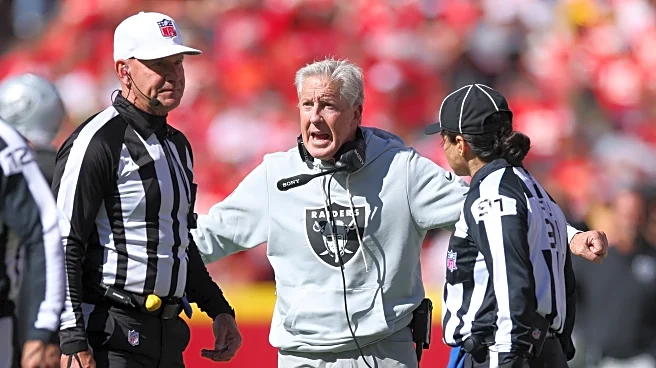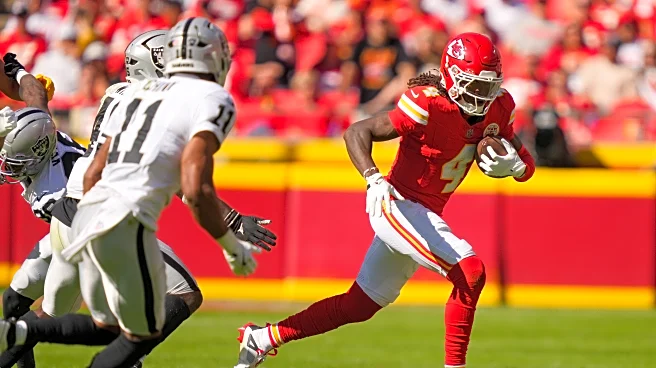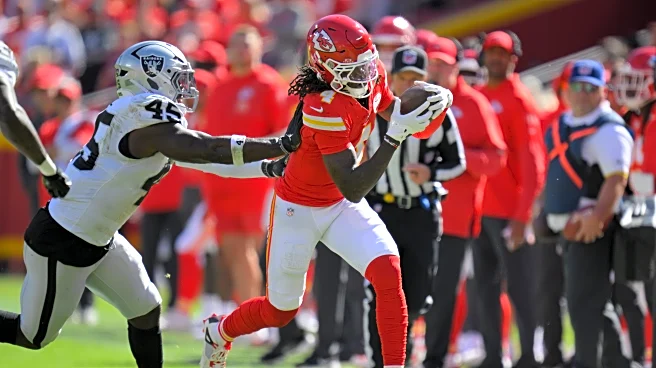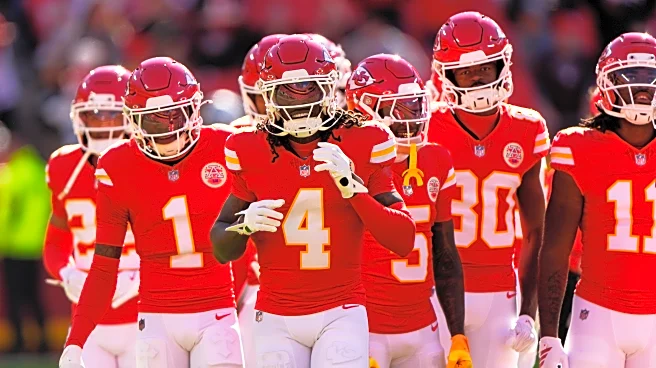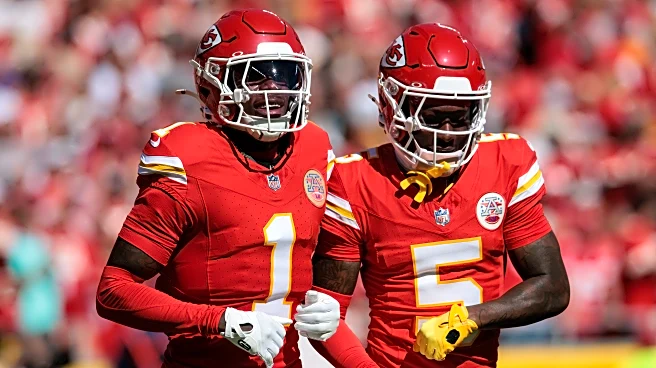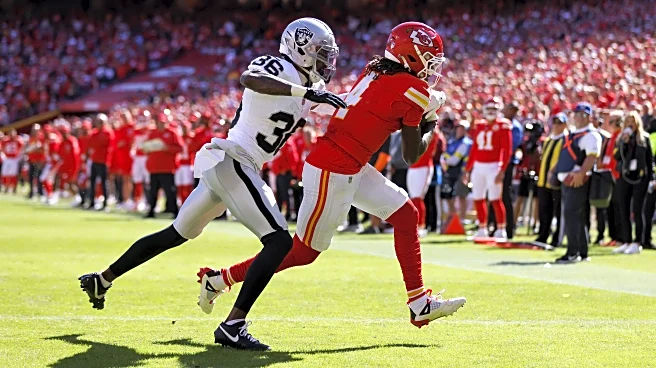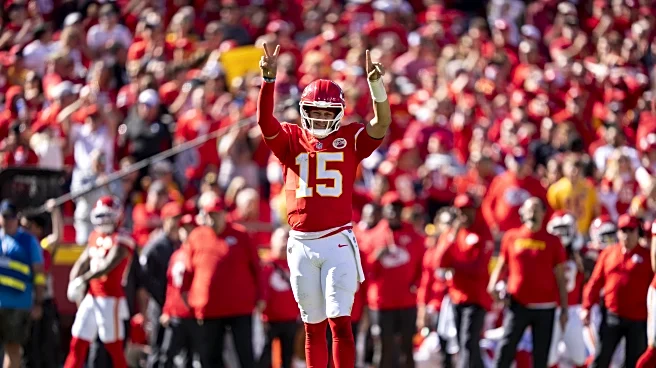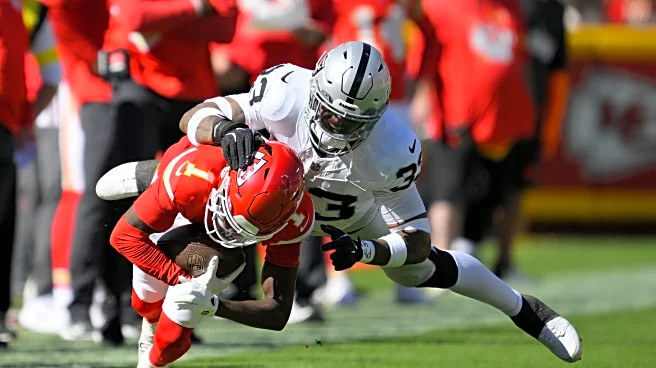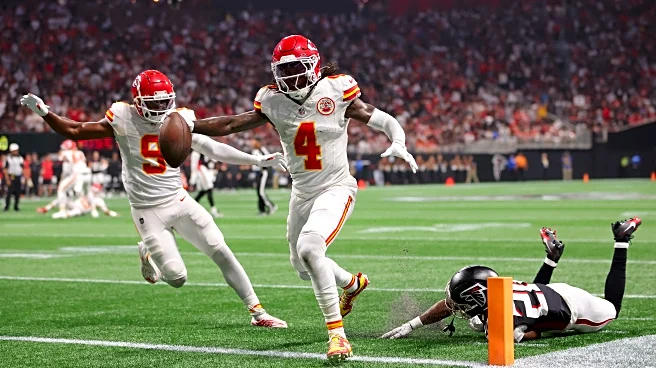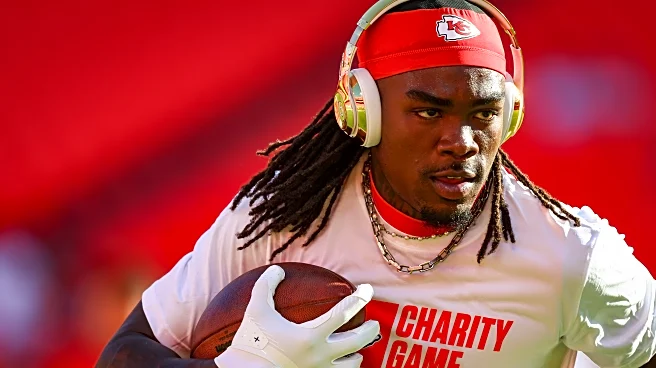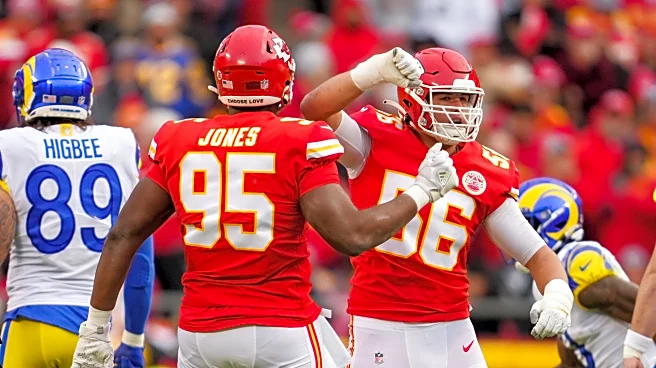On Sunday, the Kansas City Chiefs opened a can of something-or-other on the Las Vegas Raiders, escorting them off GEHA Field at Arrowhead Stadium after a 31-0 beatdown.
Here are three things that occur to me after reflecting on Sunday’s game.
1. Stone Forsyth didn’t cause Omarr Norman-Lott’s injury
No matter what I think about it, the Raiders’ backup left tackle — who was filling in for the injured starter Kolton Miller — was going to end up with some blame for the rookie defensive tackle’s season-ending ACL injury, which happened with 2:30 left in the third
quarter.
Forsyth was, in fact, the player who was engaged with Norman-Lott before he went down. He did draw an (entirely justified) unsportsmanlike conduct penalty for dropping on the Kansas City player after he was on the ground.
But I have now watched the video many times. While there is room for interpretation — unfortunately, the available video doesn’t include a great angle of the incident — it doesn’t appear that Forsyth caused the injury; Norman-Lott seems to be reaching for his knee before Forsyth lands on him.
Could Forsyth have made the injury worse? Yes… that is possible. But while I believe he absolutely deserved to be penalized for hitting Norman-Lott while he was on the ground, it appeared to be a garden-variety foul — much like a pass rusher who draws a flag for taking two steps (rather than one) before hitting a quarterback after the ball is away. It didn’t appear to be a cold-blooded, deliberate attempt to inflict physical harm on the rookie.
If you believe otherwise… well, you’re entitled to that. The legacy of Ben Davidson dies hard.
2. Xavier Worthy is the real deal
Kansas City’s second-year wideout isn’t the first NFL player to suck it up and play through a torn labrum. But he still deserves great credit for putting it aside and playing at a high level. That’s not easy to do.
It might even be that we shouldn’t have been concerned that his 5-foot-11, 165-pound frame wouldn’t stand up to the punishment doled out by the league’s defensive backs. So far, he’s proved capable of taking it — and coming back for more.
Consider this example: On a first-and-10 with a little over 10 minutes left in the third quarter, quarterback Patrick Mahomes escaped the pass rush by rolling to his right. Just short of the line of scrimmage, he threw across his body toward Worthy, who extended to make a terrific contested catch against Las Vegas cornerback Darnay Holmes. The 12-yard gain moved the sticks to the Raiders’ 15-yard line.
A defensive holding penalty on Holmes was declined. Watching live, you had to admire Mahomes’ ability to see the flag and recognize he could take a chance on the low-percentage throw to Worthy.
What was less obvious, however, was that Holmes had knocked Worthy to the ground while Mahomes was scrambling. Worthy got back on his feet, attracted an official’s attention to get the flag and then got himself open enough for his quarterback to make the throw.
As he jogged to the sideline, you could see him working his shoulder to get it back into place for the next play. Right after this, CBS caught Worthy throwing his helmet to the ground and taking his spot on the bench in obvious pain from Holmes’ tackle, in which the Raiders’ corner had brought him down using the wideout’s injured arm as a handle.
But on Kansas City’s next drive, Worthy got another first down with a 13-yard end-around.
This young man is more than a speed merchant. He is a football player.
3. The Chiefs’ trick plays are alive and well
Mahomes drew a lot of headlines for his televised NSFW complaint about what looked like an attempt to draw Las Vegas offsides on the fourth-and-1 that began the second quarter. On social media, former Kansas City offensive lineman Geoff Schwartz noted that nobody was fooled. “Not a single Raiders defender changed their posture at all,” he posted.
But Mahomes’ play-acting wasn’t meant to change anyone’s posture. It was intended to win the rep — which the Chiefs did with Kareem Hunt’s 3-yard run.
The inspiration for the play came from offensive coordinator Matt Nagy.
“Nags actually came up with the idea,” said Mahomes after the game. “We had talked about doing the hard count and trying to draw teams offsides. I can’t remember who I watched do it a couple years ago — and they had said that. I was like, ‘I’m going to use that as part of my acting to try and get the defense relaxed a little bit.’
“At the end of the day, we’ve still got to go get it — and the offensive line did a great job of driving off the ball — and then, Kareem in those situations is money.”
The drive ended with a score: an 8-yard pass to Hollywood Brown. But it should have come two plays earlier, when the team ran a variation of the inside shovel pass that Kansas City often uses for short yardage at the goal line. The Chiefs mixed it up by bringing in backup quarterback Gardner Minshew. He took the snap — while Mahomes lined up as a running back.
Rashee Rice clearly would have scored on the play — except that Mike Caliendo was called for a false start.
“The guys enjoy those — if they’re sound,” head coach Andy Reid said of the play on Monday. “That’s where I’ve got the 51% on the thing. We practice them — and we feel like by the time we use them, they’re a part of the offense.
“We normally can pull them off, [but] we had the one fail on us down there. Normally, these things work — and that one? Had we not botched it up a little bit there with the snap count, it probably would’ve scored. We’ve just got to tighten that part up.“
And here’s what Reid didn’t mention: out of that same formation, the Chiefs could run a pass to Mahomes, JuJu Smith-Schuster or Travis Kelce — or a run by Kelce or Minshew. So let’s not focus too much on the shovel pass we’ve seen so many times before.
As always, Reid is playing the long game.
